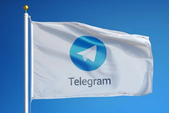
**Harnessing Telegram for Educational Purposes**
In the ever-evolving landscape of digital communication, messaging platforms play a pivotal role in connecting individuals across the globe. Among these platforms, Telegram has emerged as a powerful tool for education, offering features that facilitate collaborative learning, efficient information sharing, and community building. This article explores the ways in which educators, students, and institutions can harness Telegram for educational purposes.
One of the key advantages of Telegram is its versatility. With features such as groups, channels, and bots, it provides a multifaceted environment suitable for varied educational applications. Educators can create groups for specific classes or subjects, allowing students to engage in discussions, share resources, and collaborate on projects in real-time. The platform supports up to 200,000 members in groups, making it ideal for larger classes or study groups.
Telegram channels serve as another effective tool, allowing educators to broadcast messages to an unlimited audience. This feature is particularly useful for sharing important announcements, updates, and study materials. Unlike traditional emails, which can get lost in cluttered inboxes, messages sent via Telegram can be pinned for easy visibility. Educators can also utilize channels to provide curated content, such as articles, instructional videos, and external resources, which students can access at their convenience.
The incorporation of Telegram bots into the educational process can enhance learning and streamline administrative tasks. For example, bots can be programmed to provide quizzes, track attendance, or send reminders about upcoming assignments and deadlines. This automation not only saves time for educators but also keeps students engaged and informed, fostering a more active learning environment.
Beyond formal education, Telegram excels in creating communities and fostering peer-to-peer learning. Students can connect with one another through study groups, where they can discuss concepts, share notes, and help each other with homework. This collaborative approach not only enhances understanding but also builds a sense of camaraderie among students, making the learning experience more enjoyable and productive.
Furthermore, Telegram transcends geographical boundaries, making it an invaluable resource for distance learning and international collaborations. Educators can engage with students from different regions, facilitating cross-cultural exchanges that enrich the learning experience. For instance, language learners can practice with native speakers or join discussion groups with participants from around the world, thus gaining insights into diverse perspectives.
Security and privacy are additional strengths of Telegram. With end-to-end encryption for secret chats and the option to join groups and channels anonymously, users can communicate without the fear of their information being exposed. This assurance is particularly important in educational settings, where sensitive discussions and personal information are often shared.
As with any tool, the effectiveness of Telegram in education depends on how it is utilized. Educators must ensure that they establish clear guidelines for group interactions, maintain engagement, and monitor discussions to create a respectful and productive learning environment. Moreover, while Telegram offers numerous benefits, it is essential to recognize its limitations; for instance, it may not be suitable for all types of assignments, and comprehensive assessments may require more structured platforms.
In conclusion, Telegram presents a wealth of opportunities for enhancing the educational experience. Its unique features promote collaboration, community building, and efficient communication, making it an effective tool for both educators and students. By harnessing the potential of Telegram, educational institutions can create dynamic and engaging learning environments that cater to the needs of diverse learners. As technology continues to shape the future of education, embracing platforms like Telegram will be crucial in fostering innovative approaches to teaching and learning.











